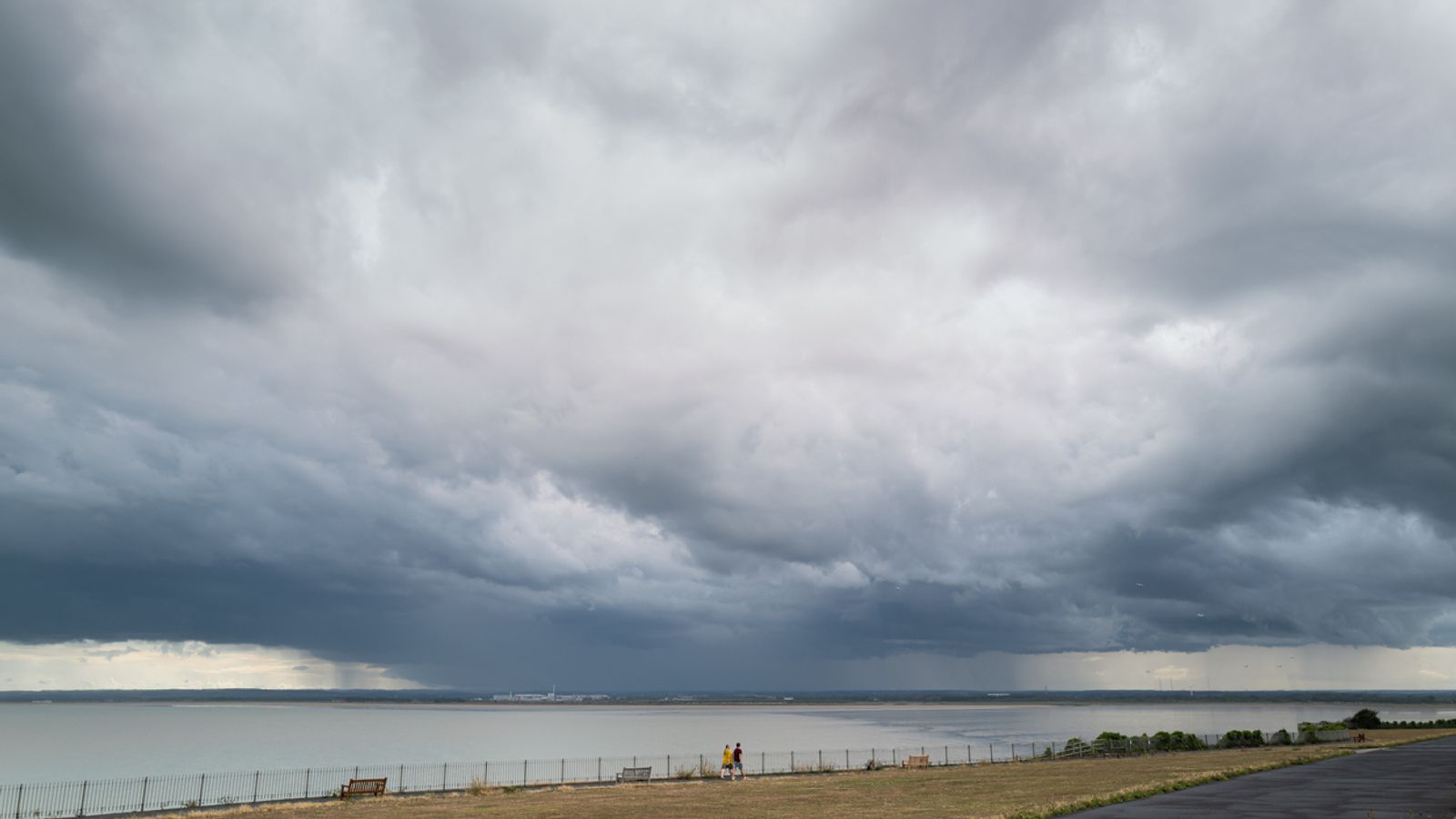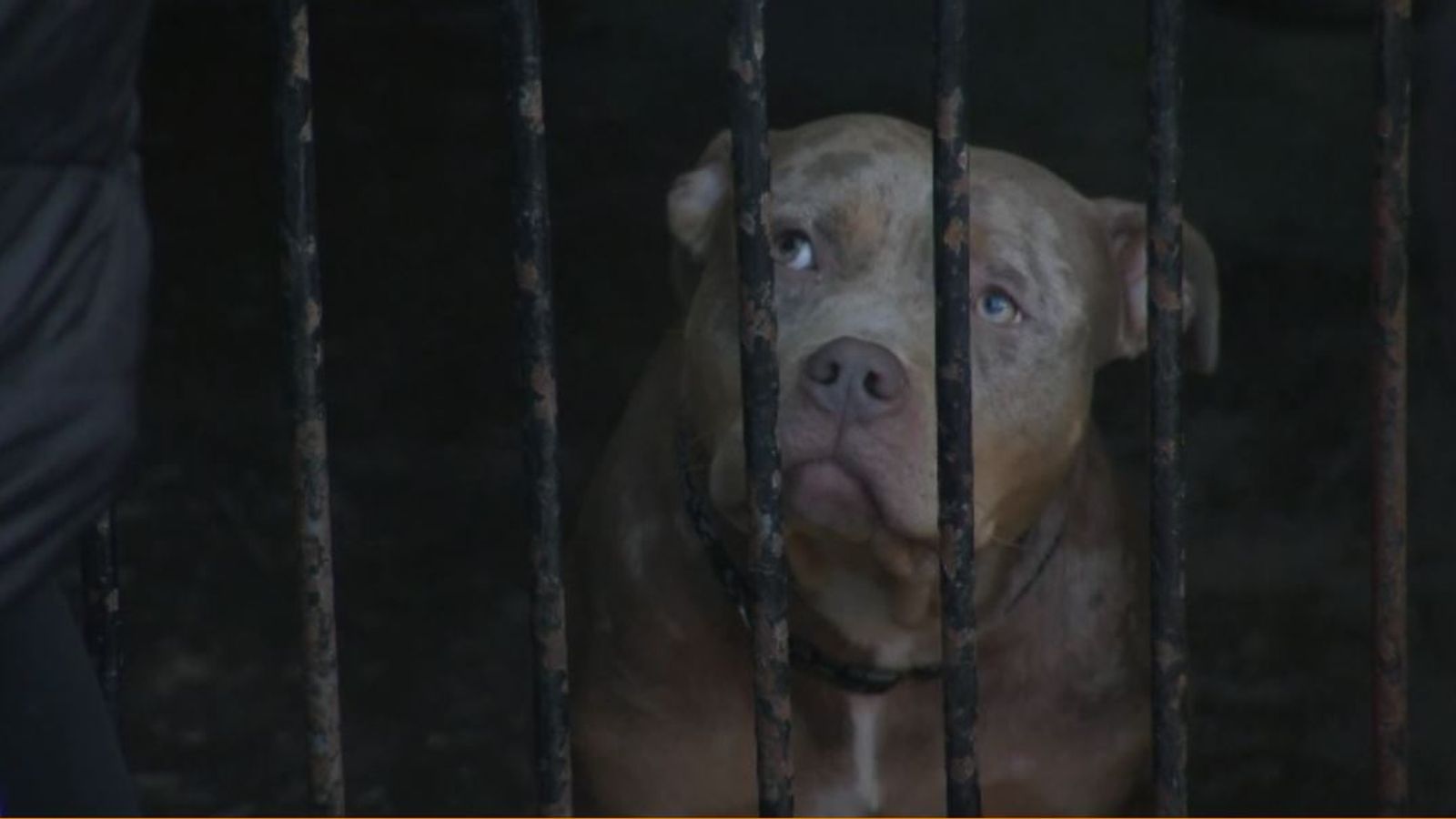Many parts of the UK are today counting the cost of the country’s hottest day on record, with homes and businesses claimed by wildfires as temperatures topped 40C.
Flames ripped through homes as Britain was scorched by extreme heat and the country glimpsed what could be the new reality in the summer months.
A ring of fires in and around London saw a major incident declared in the capital, with people being evacuated and many taken to hospital.
Thunderstorm alert for parts of UK today – heatwave latest
London mayor Sadiq Khan said yesterday was the “busiest day for the fire service in London since the Second World War”.
He told Sky News: “On a normal day, the fire service receives, roughly speaking, 350 calls on a busy day. Yesterday they received more than 2,600 calls.”
Mr Khan also said 41 properties were destroyed in London and 16 firefighters were injured to some extent.
He added that at least some of them were taken to hospital because of “heat stress”.
The London mayor continued: “It is really important for us to recognise that one of the consequences of climate change are these sorts of temperatures which lead to the sort of fires you’re seeing behind you.”
Mr Khan also urged people not to have barbecues on Wednesday despite temperatures dropping, because the grass is still dry and will allow fire to spread rapidly if it catches alight.
All around the country firefighters were inundated with calls on Tuesday, with one fire chief calling the “brutal” day a “game-changer” and a preview of the effects of climate change.
The Met Office said 34 observation sites across England provisionally broke the previous all-time record, ranging from Bramham, in West Yorkshire, to Charlwood, in Surrey, while a further five had equalled it on Tuesday.
Temperatures are expected to drop by up to 10C in some areas on Wednesday, with heavy showers and thunderstorms to lash parts of the country, potentially causing localised flooding.
However other parts of the UK will still see highs of up to 30C and with little rain for months in some areas, the threat of wildfires remains.
In the village of Wennington on the outskirts of east London, several houses were destroyed and others were severely damaged after grass fires broke out, engulfing properties, as black smoke billowed into the air.
Aerial footage showed flames tearing across tinder-dry fields and approaching a historic church.
Asked what conditions were like, a firefighter at the scene replied: “Absolute hell.”
A total of six sites, mostly in Greater London, saw temperatures reach or exceed 40C.
Major incidents were also declared by fire brigades in Leicestershire and South Yorkshire as dozens of fires broke out amid the sweltering heat.
Dave Walton, deputy chief fire officer for West Yorkshire Fire and Rescue Service, said Tuesday was a “peek into the future” amid huge demand for firefighters.
He said: “It’s about a completely and fundamentally different operating environment where fires burn with such ferocity, and spread with such speed in suburban areas that you can’t stop them.
“We’ve seen the kind of conditions faced by international colleagues just miles from our capital city, and in towns, villages and cities the length and breadth of the country.
“Today was about climate change, the hottest UK day on record – ever!”
Chief Secretary to the Treasury Simon Clarke said the government will “stand by” those impacted by the fires.
“I’m absolutely certain the government will look at whatever is needed to make sure that people are looked after at a time like this,” he told Sky News.
“The government will stand by people who need assistance after an emergency event, as we always do.”
Record temperatures bring rail disruption
It comes as dozens of trains were cancelled or delayed across England on Wednesday morning because of problems caused by the extreme heat.
The hottest day on record in the UK on Tuesday caused damage to overheard wires, tracks, and signalling systems.
National Rail has told customers to check before setting off on their journeys and to only travel if absolutely necessary.
Meanwhile, LNER is advising customers not to travel after the heat caused major damage to the rail infrastructure on its network.
Train services across the Great Northern and Thameslink network will also be cancelled, delayed or revised due to a “number of incidents”.
South Western Railway and Avanti West Coast services are also affected.
You can see the full breakdown of today’s disruption by visiting the National Rail enquiries website.




